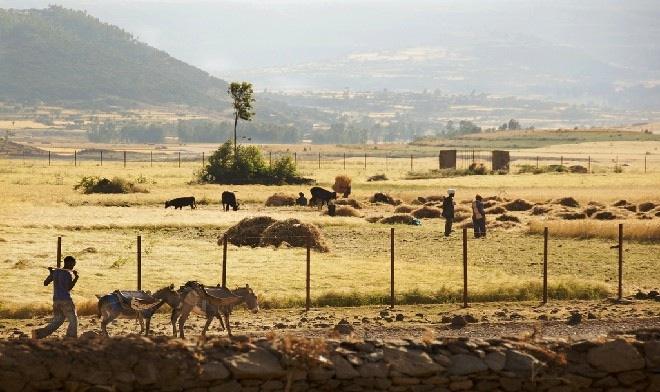Despite the significant progress made in eradicating hunger over the last few decades, the economic downturn, exacerbated by rising food prices, continues to have a dramatic impact on agricultural performance and food security throughout the world.
With some 870 million chronically undernourished people and many others suffering from micronutrient deficiencies, global food security remains vulnerable, according to the 2013 edition of the Statistical Yearbook published by the U.N. Food and Agriculture Organization (FAO).
The publication collects data from all over the world to highlight current trends and factors shaping the global food and agricultural landscape. In addition to FAO’s traditional domains, including forestry, fisheries, agricultural production, trade, and resources, this year’s edition of the yearbook features two new indicators, including greenhouse gas emissions and global investment.
The report notes that crop production worldwide has increased three-fold over the last five decades, mainly due to higher production yields and crop intensification. As a result, global average per capita food availability increased “from about 2,200 kcal/day in the early 1960s to more than 2,800 kcal/day by 2009,” with Europe currently having the highest per capita food supply of 3,370 kcal/person/day.
But FAO’s new figures also prove that feeding the global population today creates approximately 5 billion tons of carbon dioxide emissions annually.
Despite the increased agricultural production worldwide, roughly one in eight people do not consume enough food to meet their nutritional needs, and the vast majority are living in developing countries. African countries reported the highest rates of underweight from 2005 to 2011, concentrated mainly in Middle and Southeastern Africa, and the Horn of Africa.
The report also highlights how an increase in global public spending on agricultural research and development (R&D) rose from US$26.1 billion in 2000 to US$31.7 billion in 2008. Developing countries, including China, India, Argentina, Brazil, Iran, Nigeria, and the Russian Federation, were the main drivers of this increase. However, according to FAO, “These trends mask the negative developments that have taken place in numerous smaller, poorer and less technologically advanced countries,” which often lack the necessary resources to develop and scale up successful and profitable science and technology innovations.















